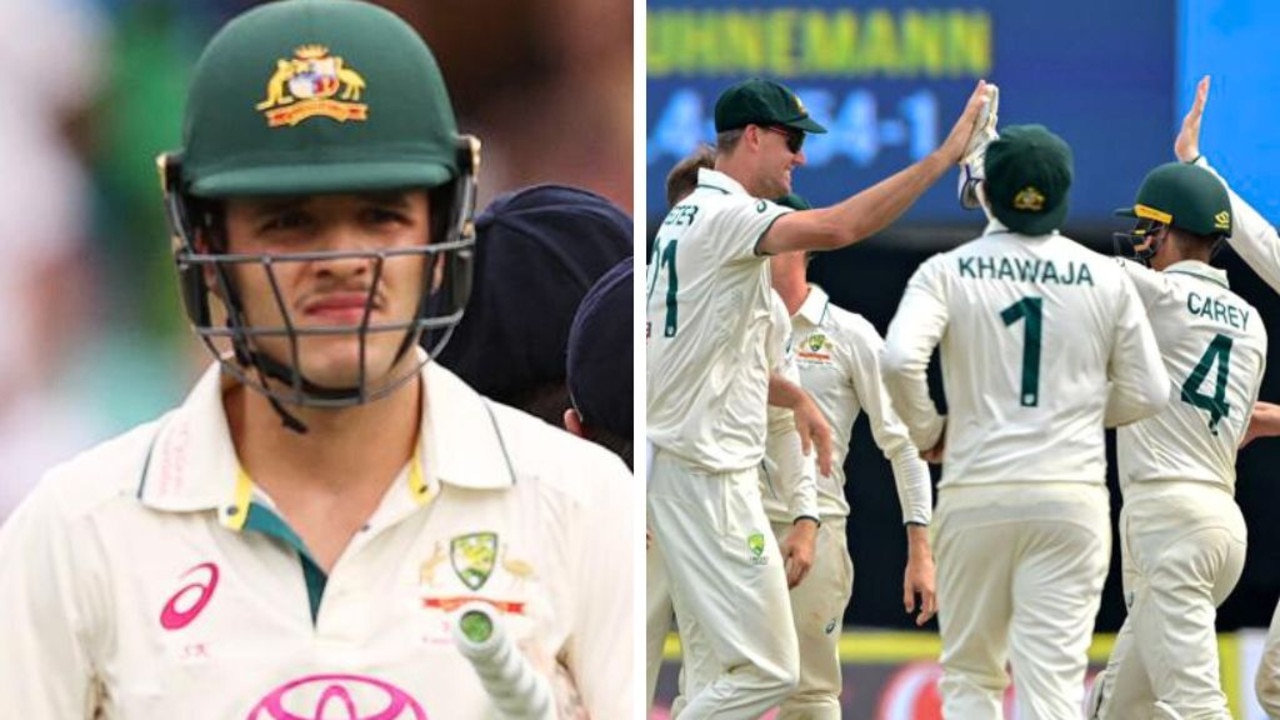Explained: the impact of rain on World Cup semi-finals — and how it could help Aussie title defence
Australia could lift the World Cup without facing another ball in the next week, while New Zealand’s hopes of progressing could also rest on a timely rain shower. WORLD CUP’S RAIN RULES EXPLAINED.
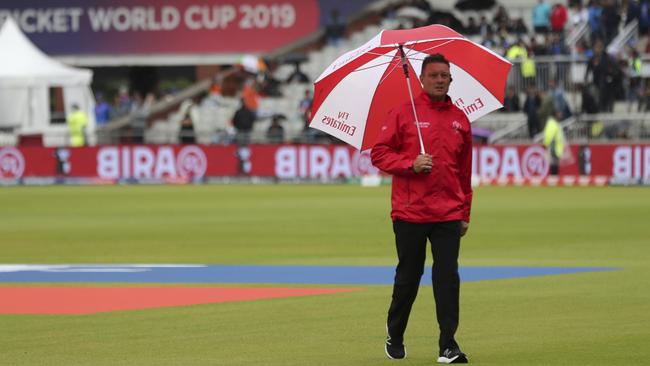
Cricket
Don't miss out on the headlines from Cricket. Followed categories will be added to My News.
- Big Show’s, Big Shock: Gun all-rounder facing axe
- Fortress Edgbaston gifts England home comforts
- Aussies make barefoot investment in Cup success
- How Australia can reach final without facing a ball
Raining in England? You wouldn’t read about it...
But short of banning the United Kingdom from hosting cricket events for good, it’s something we will have to put up with — and why we’ve rules in place to establish winners and losers in the event of bad weather.... for the most part.
We’ve broken down what the dreary conditions in England mean for the remainder of the World Cup — including how Justin Langer’s men can lift the trophy without facing another ball.
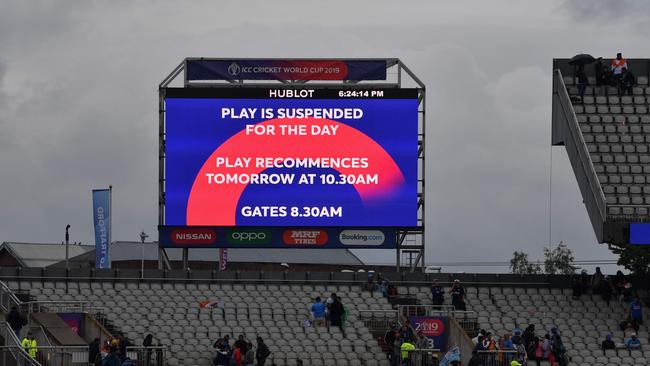
INDIA-NEW ZEALAND ON A KNIFE’S EDGE
New Zealand will resume its innings at 5-211 in the 47th over after rain halted play on Tuesday night, facing an enormous mountain to climb to keep their World Cup hopes alive against top-ranked India.
But rain could yet still play an enormous role in this game and for the remainder of the World Cup.
At one point on Tuesday night it appeared that the Duckworth-Lewis-Stern method was going to step in and give the Black Caps a significant boost — with their modest score of 5-211 to be transformed into a competitive total should the match have been reduced to a 20-over shootout.
LISTEN UP: Ben Horne and Steve Wilson join podcast host Andrew Menczel to preview the World Cup semi-finals.
Stream above now or search ‘Cricket Unfiltered’ on iTunes, Spotify or wherever you get your podcasts from, and subscribe today to never miss an episode.
Had that been the case, India would’ve been tasked with chasing at a runrate of 7.4 per over — considerably more than the paltry 4.57 which New Zealand are currently crawling at.
The prospect of the DLS system influencing this semi-final result had Indian fans raging on Tuesday night, but they’d be well advised to keep the calculators within arm’s reach because the match may still be shortened.
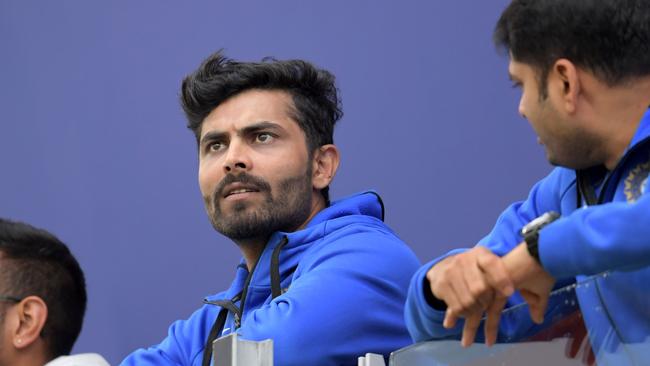
There’s a 20 per cent chance of rain in Manchester on Wednesday — though it is unlikely the whole day’s play will be washed out.
New Zealand will finish its 50 over innings, and it will remain a 50-over contest between the two sides.
But if the rain returns then DLS could again rear its ugly head and India may again face a tricky chase under cloudy Manchester skies.
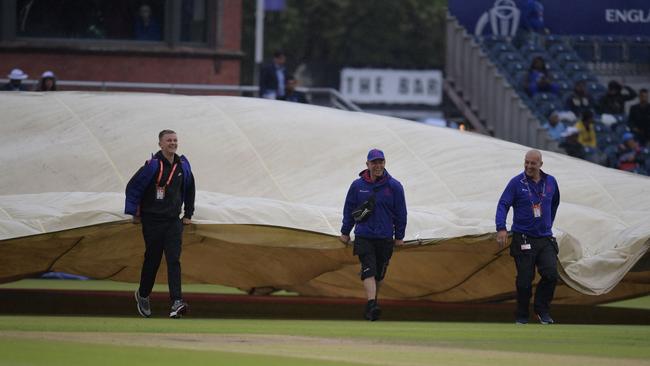
HOW THIS IMPACTS AUSTRALIA
In theory, Australia could go home as World Cup winners without even facing another ball.
It is fairly well known that a two-day Birmingham downpour on Thursday and Friday would be enough for Australia to progress to the final on Sunday at Lord’s — due to their superior ladder position compared to England.
And that’s not even too farfetched a situation, with a 50 per cent chance of rain on Thursday.
However it’s also possible for a London washout to secure Justin Langer’s side a bizarre title defence.
Should the final also be rained out for two consecutive days — an unlikely but not impossible scenario, given the current weather hitting the UK — then the two finalists would leave the World Cup as shared champions.
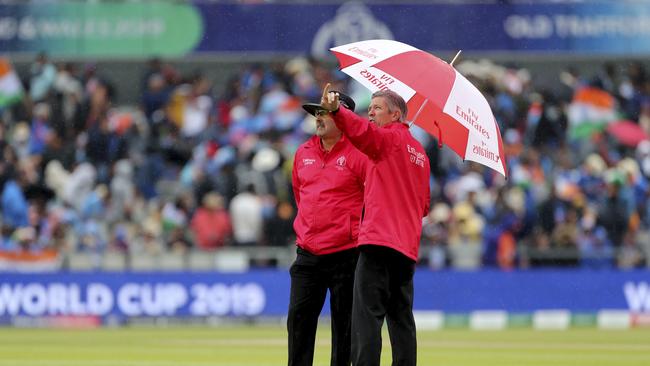
That would still be the case even if Australia was facing India, who finished higher at the end of the round-robin stage.
There is a precedent for such a scenario. In 2002, the final of the Champions Trophy was twice rained out at a very wet Colombo.
In their first attempt, Sri Lanka batted first and scored 5-244 from their 50 overs, before India’s innings was cut short just two overs in.
The following day, Sri Lanka batted first once more and finished 7-222 — but again the rain intervened, with India 0-38 in the ninth over.
The two teams were declared joint winners, as could happen this weekend.
It seems farcical that the pinnacle of the 50-over game could finish with a shared title due to bad weather.
But let’s hope it doesn’t come to that.
Originally published as Explained: the impact of rain on World Cup semi-finals — and how it could help Aussie title defence


